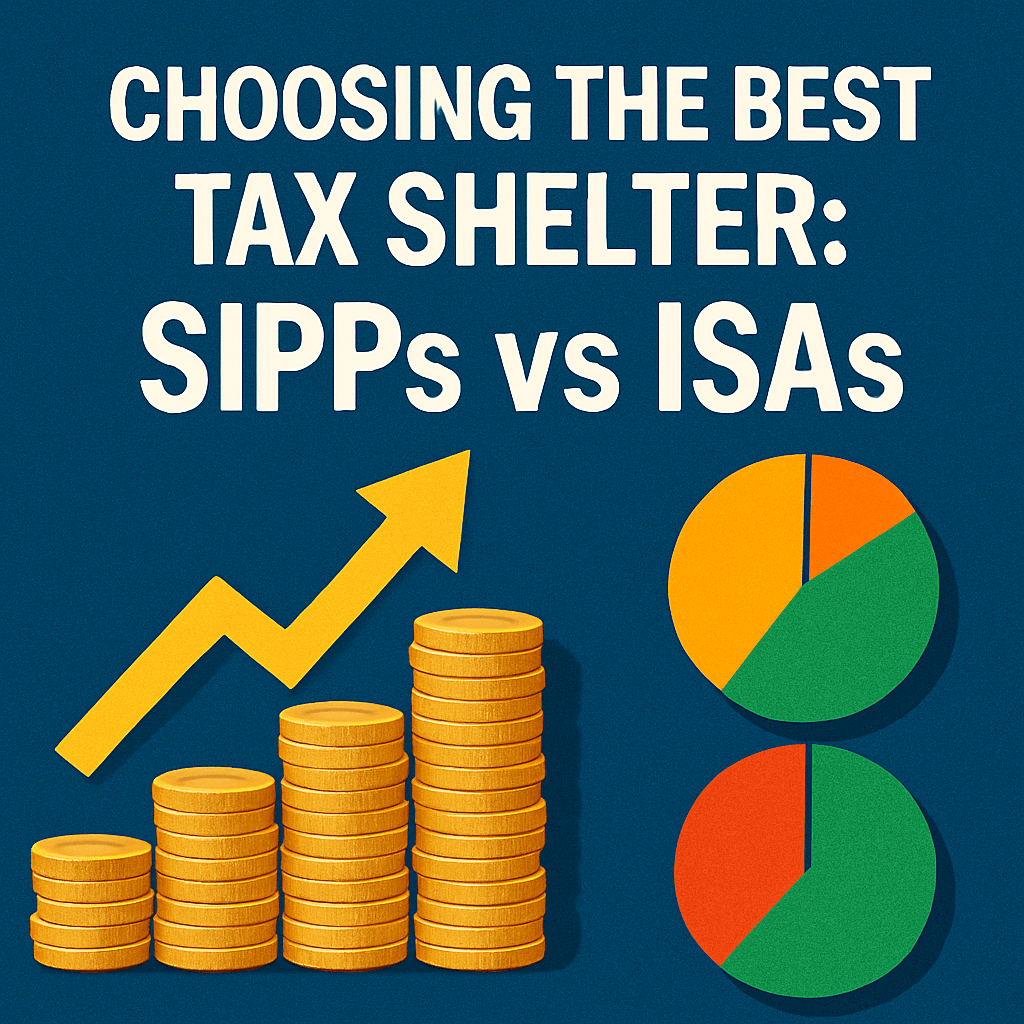Choosing the Best Tax Shelter: SIPPs vs ISAs

When deciding on whether to invest in a Self-Invested Personal Pension (SIPP) or an Individual Savings Account (ISA), the choice can often feel overwhelming. Do these two investment vehicles provide enough differentiating factors to attract serious consideration? While there are several clear advantages for each, the specifics of your financial situation play a crucial role in this equation.
Understanding the Basics
First, let us establish what SIPPs and ISAs are, as well as their similarities and differences.
- Self-Invested Personal Pension (SIPP): A type of pension plan that allows individuals to manage their investments directly. SIPPs offer tax relief on contributions, which can make them particularly attractive.
- Individual Savings Account (ISA): An investment account where individuals can save or invest in a tax-efficient manner. Contributions are made from taxed income, but withdrawals, including capital gains, are tax-free.
Key Comparisons: SIPPs vs ISAs
The table below summarises some key similarities and differences between SIPPs and ISAs.
| Tax Feature | SIPP | Stocks and Shares ISA |
|---|---|---|
| No Tax on Dividends | Yes | Yes |
| No Tax on Interest | Yes | Yes |
| No Tax on Capital Gains | Yes | Yes |
| Investment Options (Funds, ETFs, Bonds, Shares) | Yes | Yes |
| Workplace Contributions | Yes | No |
| Tax-Free Cash Withdrawal | 25% up to £268,275 | N/A |
| Annual Contribution Limit | £60,000 | £20,000 |
| Access Anytime | No | Yes |
When to Choose an ISA or a SIPP
As a general rule, the choice between SIPPs and ISAs often hinges on one’s retirement timeline and income tax bracket:
- Access Before Minimum Pension Age: If you intend to utilize your funds before reaching the minimum pension age—currently set at 57 in the UK—a Stocks and Shares ISA will be more advantageous.
- Employee Contributions: If you are fortunate enough to receive employer contributions, prioritizing a SIPP can prove wise since these contributions represent “free money” that can substantially enhance your retirement savings.
- Tax Rate Considerations: If you are a higher-rate taxpayer (40% or above), prioritizing your SIPP can yield greater long-term advantages compared to ISAs, given the substantial tax relief received on contributions. Conversely, for basic-rate taxpayers, the analysis may yield different results, particularly when considering the Lifetime ISA (LISA), which we will discuss further.
The Impact of Tax Changes on Investment Decisions
One of the most significant uncertainties in retirement planning, as recently highlighted by experts, is the potential for changes in tax policy affecting pensions. A UK-based study titled Tax Uncertainty and Retirement Savings Diversification elaborates on how variations in tax rates could reshape the attractiveness of SIPPs versus ISAs. For instance:
- SIPPs may suffer if future income tax rates increase post-retirement, diminishing the efficacy of tax relief enjoyed on contributions.
- ISAs prevent locking in income tax rates, making them a safer bet if tax brackets rise in the future.
Further Considerations: Analyzing Personal Circumstances
The decision must further account for individual circumstances, making an assessment of your current tax status an essential component. Some points to consider include:
Future Income Scenarios
As you approach retirement, your income levels will significantly influence which vehicle is optimal. Evaluating potential retirement income against current contributions can help forecast your tax liabilities:
- Will your SIPP income be taxed at a lower bracket compared to the tax relief secured when you were working? This situation typically favors SIPPs for higher-rate taxpayers who expect to retire in a lower band.
- Are you utilizing your full personal allowance? Depending on how you structure your income sources, your SIPPs’ effectiveness can change dramatically.
Risk Management and Diversification Strategies
Diversifying your retirement savings across multiple tax shelters, such as SIPPs and ISAs, acts as a hedge against future tax uncertainties. This strategy allows individuals to mitigate risks associated with unfavorable tax policy changes:
- Creating a balanced approach can protect against volatile market performance characteristics and changing regulatory frameworks.
- Employing both investment structures ensures flexibility, allowing you to draw from whichever account provides more favorable tax treatment at the time of withdrawal.
Conclusion: The Optimal Tax Shelter?
Ultimately, deciding between SIPPs and ISAs requires a nuanced understanding of personal financial goals coupled with tax implications. Given the current landscape of rising tax thresholds and potential freezes until at least 2028, many may find SIPPs more beneficial due to employer contributions and upfront tax relief. Nonetheless, ISAs offer superior liquidity and flexibility, especially for younger investors. Assessing your unique situation—and possibly diversifying investments to include both vehicles—will offer the most robust approach to achieving long-term financial goals.
To wrap it up, while there is no one-size-fits-all answer, a comprehensive understanding enhances your ability to make informed investment choices.